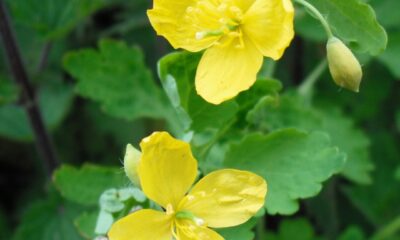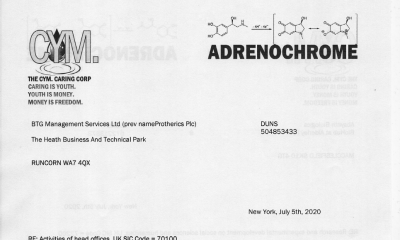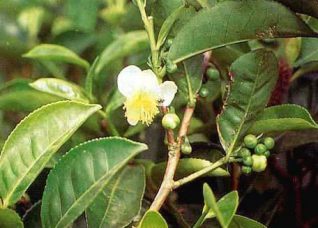Durand Dah-Nouvlessounon, 1 Hubert Adoukonou-Sagbadja, 2 Nafan Diarrassouba, 3 Haziz Sina, 1 Adolphe Adjanohoun, 4 Mariam Inoussa, 1 Donald Akakpo, 1 Joachim D. Gbenou, 5 Simeon O. Kotchoni, 6 Mamoudou H. Dicko, 7 and Lamine Baba-Moussa 1
Abstract
Kola nut is chewed in many West African cultures and is used ceremonially. The aim of this study is to investigate some biological effects of Cola nitida‘s bark after phytochemical screening. The bark was collected, dried, and then powdered for the phytochemical screening and extractions. Ethanol and ethyl acetate extracts of C. nitida were used in this study. The antibacterial activity was tested on ten reference strains and 28 meat isolated Staphylococcus strains by disc diffusion method. The antifungal activity of three fungal strains was determined on the Potato-Dextrose Agar medium mixed with the appropriate extract. The antioxidant activity was determined by DPPH and ABTS methods. Our data revealed the presence of various potent phytochemicals. For the reference and meat isolated strains, the inhibitory diameter zone was from 17.5 ± 0.7 mm (C. albicans) to 9.5 ± 0.7 mm (P. vulgaris). The MIC ranged from 0.312 mg/mL to 5.000 mg/mL and the MBC from 0.625 mg/mL to >20 mg/mL. The highest antifungal activity was observed with F. verticillioides and the lowest one with P. citrinum. The two extracts have an excellent reducing free radical activity. The killing effect of A. salina larvae was perceptible at 1.04 mg/mL. The purified extracts of Cola nitida‘s bark can be used to hold meat products and also like phytomedicine.
1. Introduction
The African continent has a huge biodiversity with a high number of plants used for medicinal [1], food and in traditional ceremonies. In recent years, there has been a gradual revival of interest in the use of medicinal plants in developing nations [2]. Despite the existence of hospitals in developing countries and laws that consider traditional medicine as an illegal act, the valorization of the traditional medicine has become an early criterion of identity as well as rights of health and education [3]. In the same way, it was reported that about 80% of Africans use medicinal plants to treat various diseases [4]. Among the medicinal plants, cola nut (Cola nitida) highly spreads in Africa and particularly in Benin.
Indeed, C. nitida is a plant native to tropical West Africa and belongs to Sterculiaceae family [5]. This plant is nowadays cultivated from Senegal to Nigeria, in the West Indies and South America [6]. In West African’s forest areas, cola is perhaps second in importance to the palm tree as an indigenous cash crop [7]. Cola nut has been an important article of international trade in many parts of Africa [8]. The nuts of C. nitida contain about two percent of caffeine and are chewed by many people as a stimulant. It is a very special and important item used in social and ceremonial activities by Africans. The nuts of cola also have industrial usage for the production of drugs, soft drinks, wines, candies, and beverages [9] such as Coca-Cola and Pepsi-Cola [10]. It has many pharmacological properties and contains some active principles: it prevents sleep, thirst, and hunger and acts as an antidepressant [7]. The cola nuts are source of antioxidants and contain a wide array of complex secondary plant metabolites such as theobromine, d-catechin, L-epicatechin, and kolatin [11]. The use of the plant in the treatment of certain diseases has been reported by several authors [12, 13].
Nowadays there exist more than 250 types of infections caused by bacteria and fungi [14, 15]. Among these microorganisms, we find the Pseudomonas, Escherichia coli [16], and bacteria of the genus Staphylococcus that are known to be one of the main elements of human physiological flora [17] and are responsible of many diseases [18–20]. In the rank of fungi, the moulds producing toxins are mainly of genus Aspergillus, Penicillium, and Fusarium [21]. With the advent of modern medicine and for the treatment of infections, abusive and often uncontrolled use of antibiotics brings up a phenomenon of resistance in most of the bacteria and fungi. Beyond infectious diseases, oxidative stress is a very serious phenomenon that can trigger molecular and cellular events in the body. The consequences are multiple, such as cancer [22], cerebral and cardiovascular diseases, diabetes, and hypertension [23].
To face these health problems (resistance of microorganisms and natural phenomenon of production in the body of the free radicals), the track of medicinal plants deserves to be explored. In this direction in Benin, several ethnobotanical studies [24–26] have focused for several years on identifying medicinal species. Others have demonstrated the efficacy of medicinal plants in the fight against certain fungal strains [27], and pathogenic Gram-positive and Gram-negative bacteria involve several pathologies [28]. Furthermore, in Benin, very little study has been conducted on C. nitida, and the references which relate to its phytochemical composition and its biological properties are quasi-nonexistent. In the same way the work realized on the species in other countries concerns seed; those concerning species bark are rare and the results are disparate. The aim of this study was to make the phytochemical screening of C. nitida bark and to investigate in vitro some biological (antimicrobial, antifungal, and cytotoxic) activities of its extracts.
Reference:
https://www.ncbi.nlm.nih.gov/pmc/articles/PMC4341853/


 Alternative Health2 years ago
Alternative Health2 years ago
 Life Force Network2 years ago
Life Force Network2 years ago
 Alternative Health1 year ago
Alternative Health1 year ago
 Life Force Network2 years ago
Life Force Network2 years ago
 Alternative Health2 years ago
Alternative Health2 years ago
 Military2 years ago
Military2 years ago



















